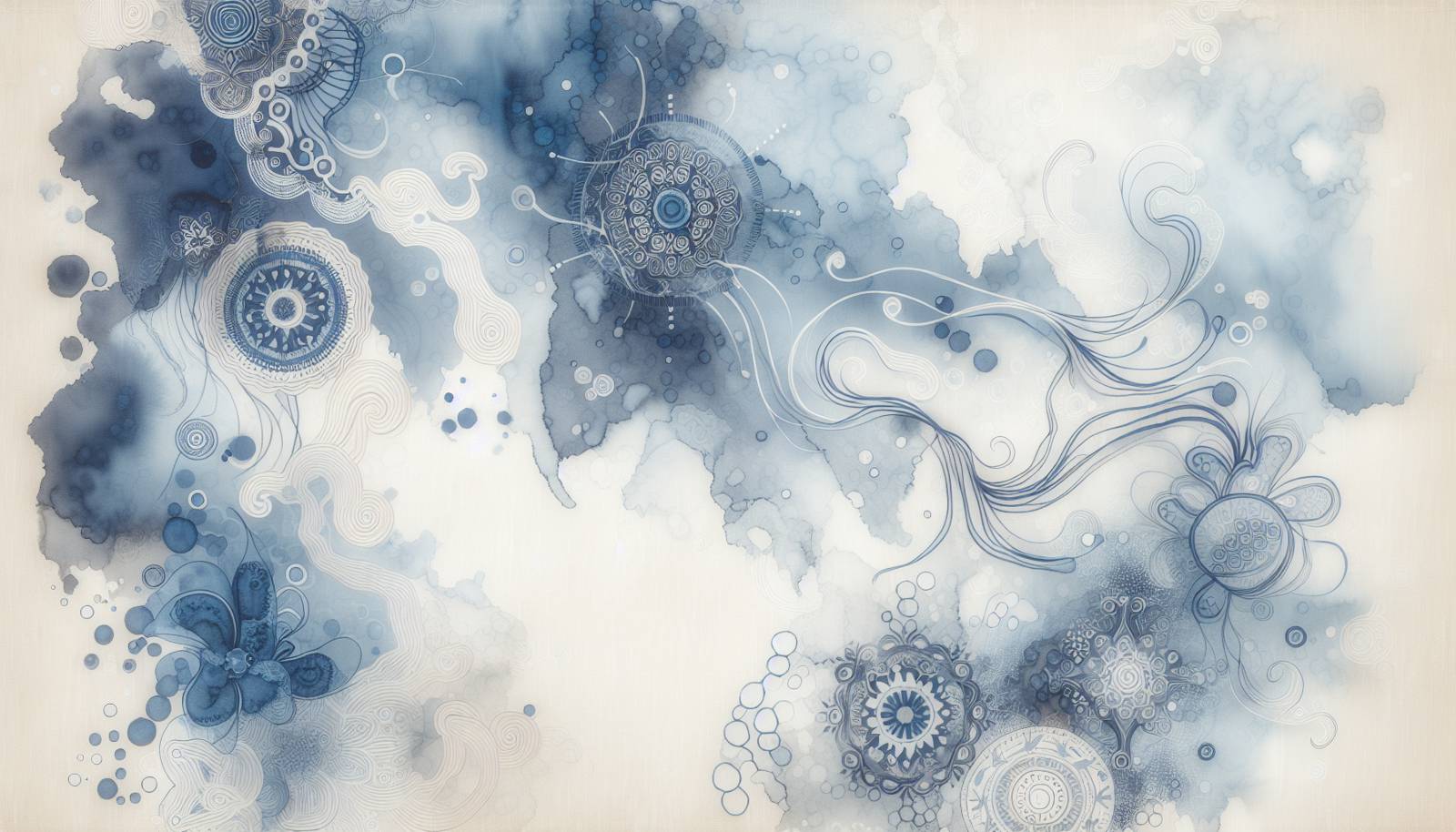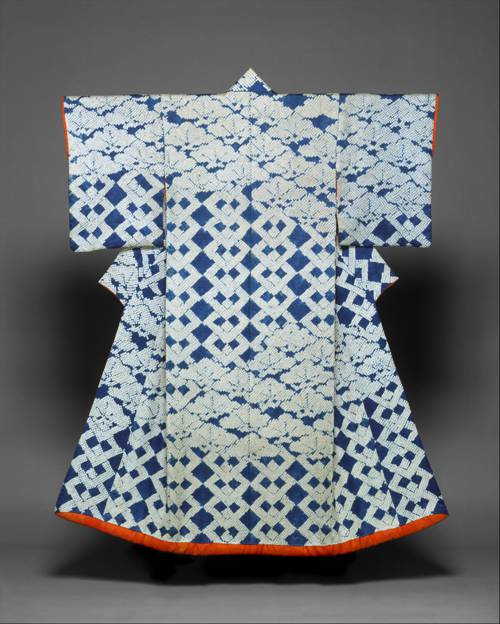
FAQ About The Role of Shibori in Modern Textile Design

What is Shibori?
Shibori is a traditional Japanese manual resist dyeing technique that produces patterns on fabric. The term "shibori" comes from the Japanese verb "shiboru," which means "to wring, squeeze, and press." This technique involves folding, twisting, or bunching cloth and binding it, then dyeing it in indigo or other colors to create intricate patterns.

How has Shibori influenced modern textile design?
Shibori has significantly impacted modern textile design by inspiring contemporary designers to incorporate its traditional techniques into their creations. Modern textile artists use these methods to produce unique patterns and textures in fashion and home textiles, often blending them with new materials and technologies. Shibori's emphasis on handcrafted artistry and its visual appeal have also resonated with today's growing consumer interest in sustainable and artisanal products.

What are common Shibori techniques used in modern design?
Several traditional Shibori techniques are commonly used in modern design, including:
- Arashi Shibori: fabric is wrapped around a pole and bound before dyeing, creating diagonal stripes.
- Itajime Shibori: folding and clamping fabric between two pieces of wood, resulting in geometric patterns.
- Kanoko Shibori: similar to tie-dye, involving sections of cloth bound with thread.
- Kumo Shibori: sections of fabric are pleated and bound tightly, leaving intricate circular patterns.
These techniques have been adapted to create modern interpretations in clothing, accessories, and interior design.

Why is Shibori considered important in sustainable fashion?
Shibori is valued in sustainable fashion because it relies on handcrafting methods that typically require less energy and resources compared to machine-based techniques. The use of natural dyes, such as indigo, aligns with eco-friendly practices by reducing chemical pollution. Additionally, Shibori promotes slow fashion principles by focusing on quality and the artisanal skill involved in creating unique, long-lasting pieces.

Can Shibori be combined with other modern techniques?
Yes, Shibori can be combined with modern textile techniques, creating innovative and visually striking designs. Designers often integrate Shibori with digital printing, machine embroidery, or use synthetic fabrics to achieve new textures and effects. This fusion of traditional and contemporary methods allows for greater creative expression and functionality in textile products.

What materials are commonly used in Shibori today?
While traditional Shibori primarily uses natural fibers like cotton, silk, and wool, modern adaptations see the use of synthetic materials like polyester blends. The choice of fabric can affect the outcome of the dye pattern and texture, allowing designers to experiment with different materials for unique finishes. Those interested in environmentally sustainable practices may still prefer natural fibers due to their biodegradability.

How has Shibori evolved over time?
Originally stemming from Japan's Edo period (1603-1868), Shibori has evolved from its traditional cultural origins into a global design trend. While it maintains its historical techniques, the art form has expanded to include a variety of textiles, colors, and patterns. Advances in textile manufacturing and global fashion influences have allowed Shibori to integrate with contemporary style, reaching apparel, accessories, and home decor.

What is the cultural significance of Shibori in Japan?
In Japan, Shibori is more than just a dyeing technique; it represents a rich cultural heritage that expresses the nation's artistic craftsmanship. Traditionally used for kimonos and ceremonial attire, Shibori holds historical significance, symbolizing the meticulous care and creativity of the artisans. Its continued practice reflects a respect for cultural traditions and influences Japan's approach to modern design.

Are there variations of Shibori in other cultures?
Yes, many cultures have similar resist-dyeing techniques akin to Shibori. For instance, tie-dye in the United States, Bandhani in India, and Batik in Indonesia are all forms of resist-dyeing that show cultural parallels. Each technique has unique methods and cultural contexts but shares the fundamental principle of manipulating fabric to resist dye and create patterns.

How do modern designers incorporate Shibori into their collections?
Modern designers may use Shibori techniques to add texture, pattern, and a sense of craftsmanship to their collections. They integrate Shibori by applying its methods to contemporary silhouettes or blending them with current trends, resulting in stylish yet distinctive pieces. The distinctiveness of Shibori designs often appeals to consumers seeking bespoke or artisanal fashion items.

What kind of patterns can be created with Shibori?
Shibori can create an array of patterns, from simple circles and squares to more complex geometric and organic designs. The resulting pattern depends on the Shibori technique used - for example, Kanoko Shibori might yield small, circular dots while Itajime can produce bold, geometric shapes. The manipulation of fabric and choice of dye also contribute to the final design, making each piece unique.

How does the Shibori dyeing process work?
The Shibori dyeing process involves several key steps. First, fabric is prepared and manipulated using specific folding, twisting, or binding techniques. Then the prepared fabric is submerged in dye, traditionally indigo. After dyeing, the fabric is rinsed to set the colors. Once dried, bindings are removed to reveal the intricate patterns created. Each step is crucial for achieving the distinctive Shibori look.

What challenges do designers face when using Shibori techniques?
Designers using Shibori may face several challenges, such as the inherent unpredictability of the dye outcomes, which requires a high level of skill and experience. The labor-intensive nature of Shibori can also be time-consuming and costly compared to industrial printing methods. Additionally, finding the right balance between traditional techniques and modern fashion needs can be complex.

Is Shibori suitable for industrial mass production?
Though Shibori is traditionally manual and artisanal, adaptations for industrial production do exist. Techniques have been modified to fit into mechanized processes that mimic Shibori's appearance, making it more scalable for mass production. However, this often involves a trade-off between the handcrafted appeal of Shibori and the efficiency of mass production methods.

What modern innovations have been inspired by Shibori?
Innovations inspired by Shibori include combining traditional dye techniques with state-of-the-art technologies to create new textiles. For example, designers have experimented with digitally mapping Shibori patterns to create replicable designs on various scales. Additionally, eco-friendly practices have emerged, inspired by Shibori's use of natural dyes and sustainable methods.

What is the role of natural dyes in Shibori?
Natural dyes play a crucial role in traditional Shibori, with indigo being the most iconic. These dyes are favored for their environmental benefits, as they reduce the use of harmful chemicals associated with synthetic dyes. Additionally, natural dyes offer warm, rich colors that often vary based on the fibers used and production conditions, enhancing the uniqueness of each design.

How can someone learn Shibori techniques?
Those interested in learning Shibori can explore various resources such as workshops, online tutorials, and books dedicated to the craft. Participating in hands-on classes allows learners to understand the tactile nature of the techniques deeply. For self-directed learners, many online platforms offer comprehensive guides and videos that provide step-by-step instructions for beginners to advanced level techniques.

Are Shibori textiles durable for everyday use?
Shibori textiles, particularly when made with strong natural fibers and quality dyes, can be quite durable, making them suitable for everyday use in clothing and home decor. The handcrafted nature of the technique often ensures that these textiles are well-constructed, though their care might require special attention to preserve the design and dye.

Where can Shibori be seen in modern fashion collections?
Shibori influences can be seen across numerous fashion collections, from high-end runway presentations to artisanal boutique offerings. Prominent fashion houses may include Shibori-inspired pieces as part of their seasonal collections, while independent designers often create entire lines based on Shibori techniques. Additionally, Shibori patterns frequently appear in scarves, tops, dresses, and even footwear.

How can one maintain the quality of Shibori textiles?
Maintaining Shibori textiles involves specific care to preserve the dye and pattern quality. Hand washing in cold water with mild detergent is often recommended to prevent color fading and fabric damage. Avoiding long exposure to direct sunlight and careful storing of garments can also prolong their lifespan. For best results, following any specific care instructions provided by the textile's maker is advisable.
